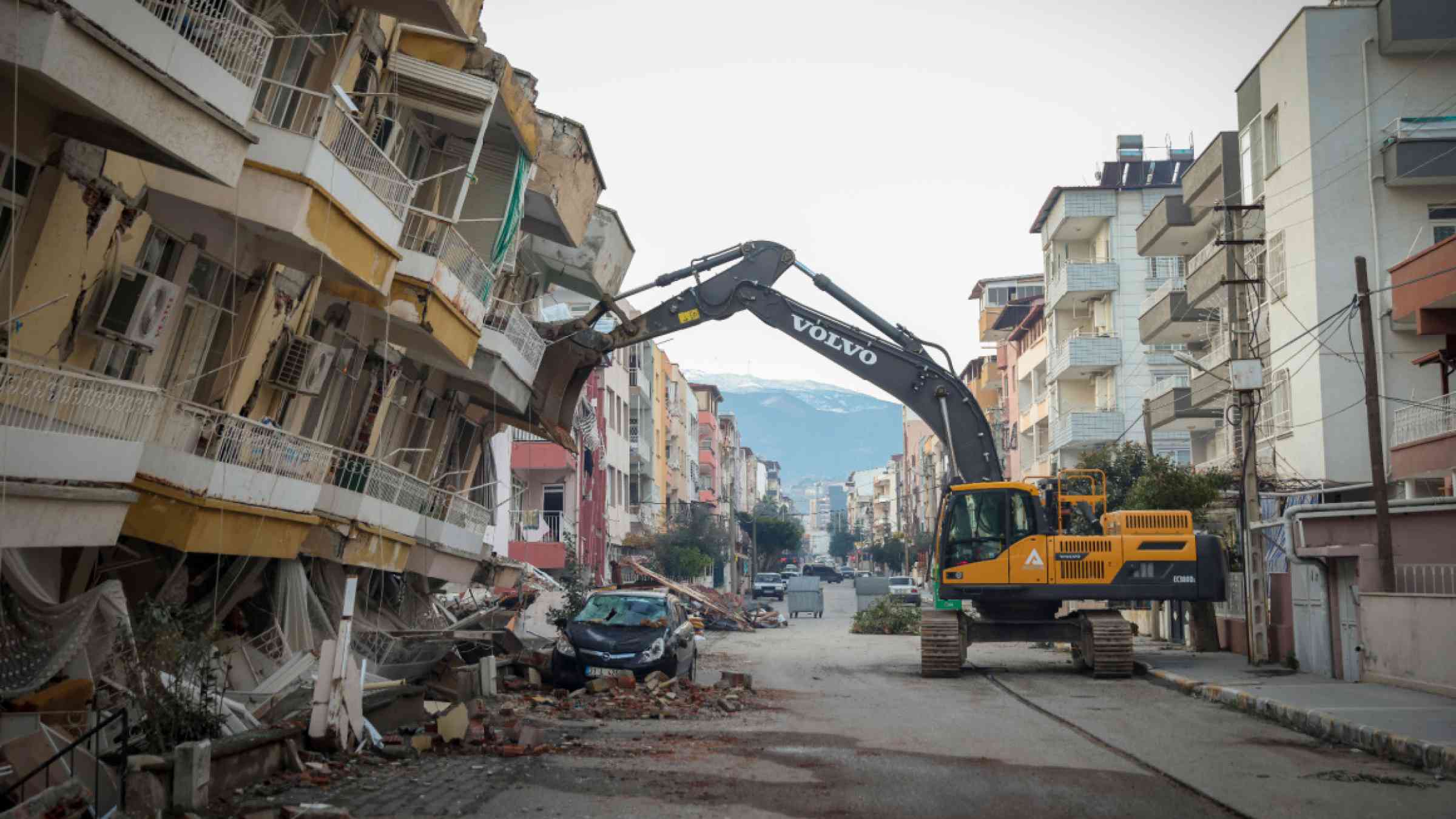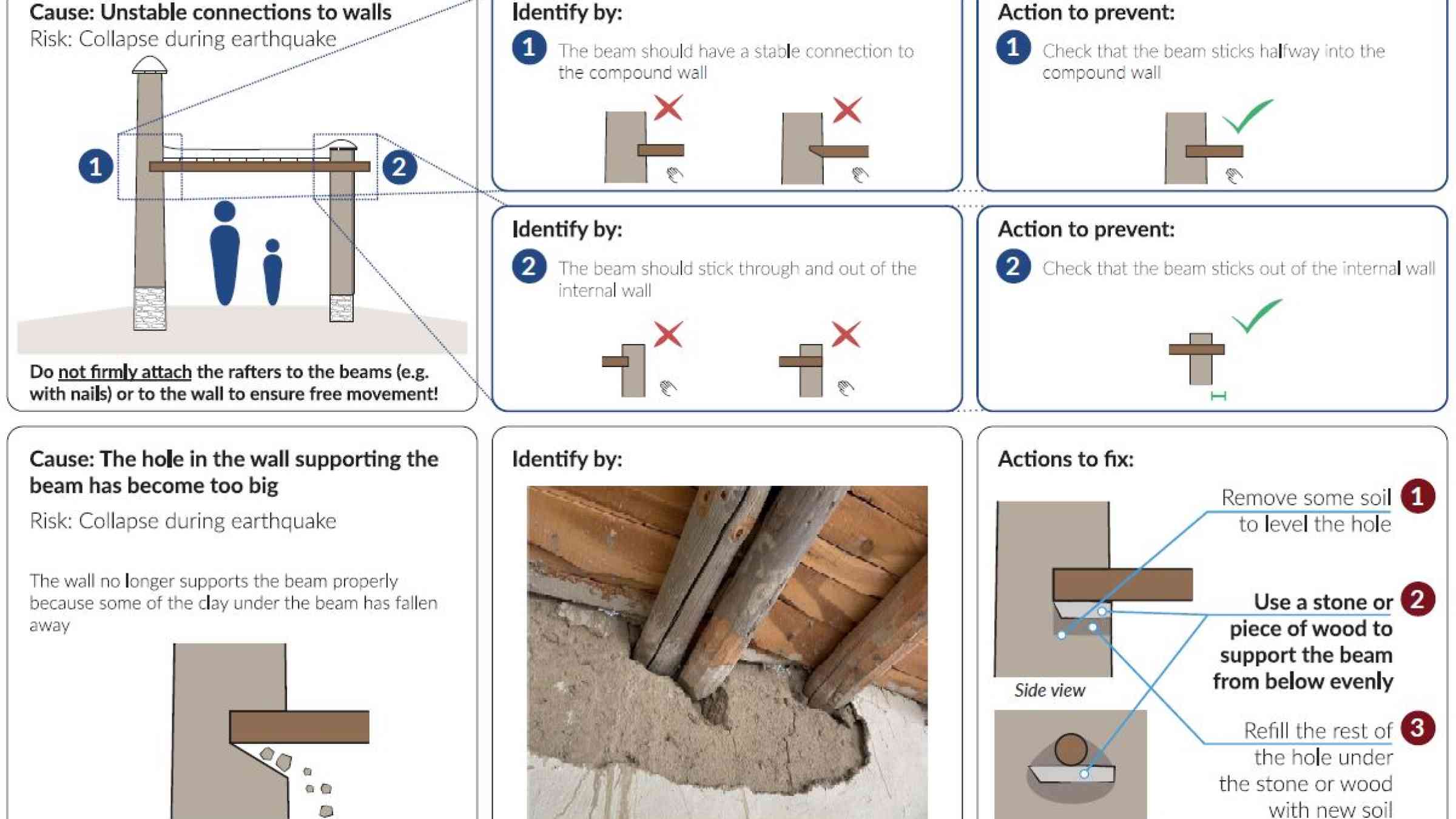Tragic lessons from Morocco and Türkiye: Earthquake resilience needs a stronger foundation

The devastating earthquake on Friday 8 September 2023 in Morocco took the country – and world – by surprise. At 6.8 magnitude, it is the strongest earthquake to hit the country since 1900 and has highlighted major weaknesses in the country’s infrastructure, particularly in rural communities.
Unfortunately, as we have already seen this year in Türkiye and Syria, this devastating scenario is not an anomaly.
The persistent global affordable housing deficit continues to put billions of lives at risk, chief among them low-income families. Exacerbated by rapid urbanization, today more than 2.8 billion people around the world live in substandard housing and informal settlements.
No matter where the next earthquake strikes, it will be the lowest income families at greatest risk of property damage, injury and death.
Currently, governments around the world spend 90% of their disaster budgets on emergency relief, but only 4% on prevention and preparedness. That equation equals disaster. Instead, our response to the earthquakes in Morocco, Turkey and Syria – and wherever is next – must go further to truly embrace disaster preparedness and disaster-resistant building practices.
Here’s where to start:
Pursue bold solutions, for everyone
Earthquakes present an opportunity for architects and engineers to think big, and many have risen to the challenge.
From massive, 300-tonne pendulums inside tall buildings that can prevent shaking by 60%, to flexible building pads that can absorb seismic waves, inspired solutions have already entered the market for large construction projects in high-income countries.
While futuristic solutions are exciting, they are also prohibitively expensive and too complex for most contexts. Corporations and startups alike need to think outside the box and pursue creative, scalable solutions.
In Manila, for example, the University of the Philippines developed an affordable way to retrofit small, informal homes to withstand 7.2 magnitude earthquakes and typhoon winds up to 200kph (124mph) by installing a grade beam foundation around and under the house: a reinforced concrete beam that transmits the load from load-bearing walls into spaced foundations. That solution is now undergoing market testing by Habitat for Humanity and partners – including a local hardware store, a contractor and a microfinance institution.
Embrace innovative, ready-for-market building materials
Rapid urbanization and densification have heightened the risk that an earthquake becomes a mass casualty event. But the disaster in Morocco shows that rural areas are not immune and desperately need to be included in preventative efforts to improve resilience. The traditional mud bricks used to build most homes, which crumbled back into ‘earthen rubble’ during the quake, claimed the lives of many and continue to hamper rescue efforts.
Adding simple, seismic-resistant techniques to vernacular building methods, like proper preparation of earth as a construction material, right dimensioning of walls and correct connections between roof carpentry and earthen walls, can significantly improve structures’ resilience while still honoring local building culture and materials.
This is the case in some rural areas of Afghanistan, heavily impacted by both the June 2022 and October 2023 earthquakes, where Miyamoto International is developing seismic-resistant shelter solutions that incorporate the traditional compound layout elements and the residential structures.

Invest in data-informed housing policies and building codes
According to the US’ Federal Emergency Management Agency (FEMA), “there is no more important factor in reducing a community's risk from an earthquake than the adoption and enforcement of up-to-date building codes,” alongside diligent inspections during construction.
This does not bode well for the many countries without national or state-wide building codes, or the government bodies to enforce them.
However, a growing number of countries are making progress in strengthening their building codes, including Mexico, Iran and Kenya.
Their progress is an important reminder that, although daunting, investing the time and resources to introduce such legislation pays dividends for a country’s GDP – and saves lives.
Access to quality data and public-sector advocacy can help speed up change.
In Peru, an unprecedented partnership between civil society, academia, government and the private sector is helping push for data-driven improvements to laws governing home construction and urban densification. The initiative, called Manzana Segura (“Safe Block”), also engages university students in data collection to show the next generation of architects and urban planners the challenges low-income families face and the importance of access to design services.
Disasters are neither natural nor inevitable
As communities in Morocco, Türkiye and Syria rebuild the world cannot accept that these disasters are “natural” or inevitable.
Erzin, a small city in Turkey’s hard-hit Hatay province, shook in the February earthquake, but no one died and no buildings collapsed. One of the factors at play seems to be local officials’ determination to enforce building codes and regulations through simple inspection during construction.
While we cannot prevent the next earthquake altogether, embracing new materials and improving policies could prevent it from becoming a humanitarian disaster.
Jonathan T.M. Reckford is chief executive officer of Habitat for Humanity International, a global housing organization that has helped more than 59 million people construct, rehabilitate or preserve their homes.
Dr. Kit Miyamoto is the Global CEO of Miyamoto International and a world-leading expert in disaster resiliency engineering, disaster response and reconstruction.